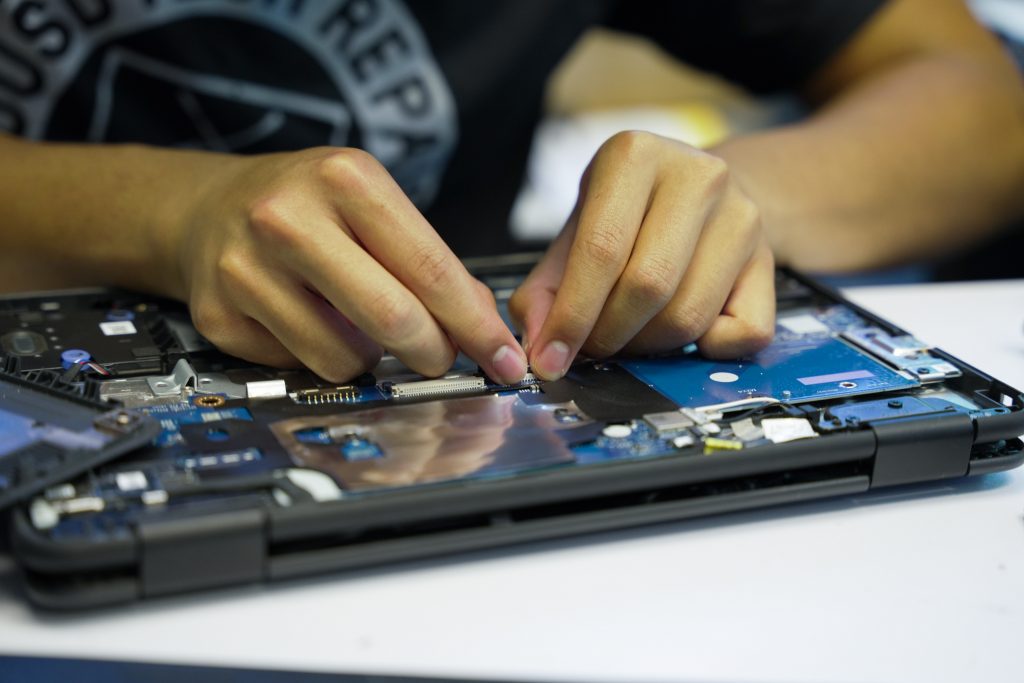When many of us have a broken phone, we assume it is beyond repair and toss it away.
A new California law called Right to Repair, which went into effect on July 1, will make such waste unnecessary.
“Broadly speaking, the Right to Repair is the idea that you should be able to fix everything you own,” said Elizabeth Chamberlain, Director of Sustainability at iFixit. “You should be able to fix it yourself if you want and get all the parts and tools and documentation you need to do that. Or if you don’t want to fix it yourself, you should be able to take it to a repair shop of your choice.
“The law that was enacted in California on July 1 will do exactly that,” continued Chamberlain. “So manufacturers of appliances and consumer electronics – laptops, cell phones, dishwashers, washing machines, all kinds of things – will have to make parts, tools and documentation available both to all consumers in California and to independent repair shops.
“That means that if manufacturers are making repair materials available to their own authorized shops, you should be able to get those materials,” said Chamberlain.
To celebrate, an event was held on June 28 with Google and Oakland Unified School District.
“We held this event in Sunnyvale at a place called Maker Nexus,” Chamberlain said. “And it’s this huge, gorgeous, really, really well-equipped maker space.
“We invited Google. Prem Pandian from Google came, and the Oakland Unified School District tech repair internship and 15 students came. They work over the summer to fix all of the Chromebooks that have broken in Oakland Unified School District over the year.
“So they brought a bunch of Chromebooks and were doing repairs at Maker Nexus. And then we brought some Pixel phones and iFixit Pixel repair kits. And we, along with Google, instructed the students in how to repair Pixel phones,” she continued. “We also had a press conference where California State Senator Susan Eggman, who was a sponsor of the Right to Repair bill, spoke about how it’ll benefit Californians.
“I think this should make repair more widely available,” Chamberlain continued. “It should mean that independent repair shops are better able to compete with manufacturers’ shops, which in turn should keep prices lower.
“So even if you ultimately choose to go get manufacturer repair – to go back to the Apple Store or whatever – to get repair competition between those shops and independent shops, the prices for repair should be lower for everybody,” she said
By giving broken electronics a second life, it is hoped that the law will make for a greener state.
“In addition to making repairs cheaper, it should also reduce waste,” said Chamberlain. “Californians create a lot of electronic waste, and the best way to keep from creating more waste is to keep the stuff that we have right now in use as long as possible. And the longer our stuff lasts, the less waste we’re creating.
“As the home to big tech, the Bay Area is a place where it’s very hard to get laws passed that mean that big tech companies have to make big changes in how they do things,” she went on. “And so I think it’s especially significant that this law passed in California.
“We worked with Repair.org to put together a tip guide for people,” Chamberlain said. “So if you ask a manufacturer for repair materials and you don’t get a positive answer, you should report that to the attorney general.
To find out more about the Right to Repair, visit the website knowyourrights.repair.org.
Related Posts:
Jim MacDonald, Won’t You Be My Neighbor?
Mike Aasen’s Big Decision
